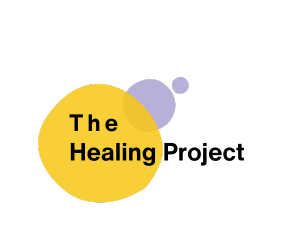Reshaping Your Reality
Did you know that you have the power to fundamentally change your reality? If you’ve started your spiritual journey, you know that it’s a quest that can take you in many directions. As you deepen your spiritual understanding, you learn more and more about your mind, its power and how it’s linked to the Universe.
The Universe is a living, thinking, creative substance. It’s friendly to you and eager to help you improve your life in any way it can. The same substance that makes up the Universe also makes up you, giving you the ability of co-creation.
Co-Creation
Co-creation is an active collaboration between you and the Universe, with the main purpose of manifesting your goals, intentions, or desires. When you think about something regularly, you activate the co-creation process. This could either be something that makes you feel joyful or something that makes you feel worried. When collaborating with you during the co-creation process, the Universe doesn’t judge what you want, it only responds to your dominant thoughts. Especially when you link these thoughts to strong emotions and take related actions.
You are co-creating, whether or not you mean to. So, everything that’s happening for you now is a result of thoughts you’ve previously been thinking.
Resistance?
Depending on your circumstances, this might feel triggering. Things might be difficult right now and life isn’t what you want it to be, suggesting that you have some responsibility might be hard to accept. If so, I want to acknowledge and confront your feelings of resistance.
We were all born under different circumstances. You might have started out rich or poor, neglected or loved, surrounded by violence or surrounded by peace. Although it can seem unfair, it’s reality that some people are born with what appear to be more advantages, whilst others are born with less.
But why? I’m sure others will have their own theories, but my spiritual journey has led me to believe that it’s about us being at different stages of our soul’s journey. Every time our soul returns to Earth, we have different things to learn, overcome, and experience. Our circumstances reflect this.
Thoughts and Beliefs
Whatever your circumstances, one thing that’s true is that your early years shaped many of your core beliefs. Beliefs are thoughts you’ve been thinking for a while, but core beliefs are thoughts you’ve been thinking since childhood. Core beliefs shape our worldview and influence how we perceive and interact with the world and others. Often, core beliefs can seem factual, but often they are based on subjective information. Shaped by your experiences, your core beliefs are dominant, ingrained, and influential.

Think about this for a moment. If you were born poor and surrounded by poverty, what core beliefs are you holding about money? Do you have as much money as you’d like? Do you think you share the same thoughts as someone who was born rich?
If your core beliefs and subsequent beliefs have placed you at a disadvantage, this might seem unfair. However, thoughts are not fixed and can be adjusted. You have the power to change the nature of your reality by altering your thinking.
Self-Sabotaging Beliefs
Now that you understand the basics of co-creation, let’s delve into one of the biggest obstacles: self-sabotaging beliefs. Self-sabotaging beliefs are negative, self-limiting thoughts that unconsciously undermine your efforts and prevent you from achieving your goals.
Have you ever thought about applying for a more senior position but then thought they’d never hire you? Or maybe you thought about trying something new but then told yourself you’d never be able to manage it. These types of thoughts are not based on fact, they are examples of self-sabotaging beliefs.
Now that you understand how your thoughts might work against you, work towards changing them. Many people uncover their self-sabotaging beliefs through interventions, such as CBT or psychoanalytic therapy. However, if these types of intervention are unavailable or unaffordable, you have other options, such as:
- Self-reflection through journaling
- Mindfulness meditation
- Inner child work
These types of strategies can help you develop a stronger sense of self-awareness. They can also help you foster a healthy form of detachment, which will help you scan your thoughts and see them more objectively.
Thought Activity
This activity can help you identify your thoughts with more clarity so you can recognise your self-sabotaging beliefs.
Below are some sentences to get you thinking about your thoughts. Grab a pen and paper and, without too much thought, flip the box and finish each sentence with whatever comes to mind.
The answers you give should help show you the beliefs you hold about different parts of your life. You will also probably notice a correlation between what you’re thinking and what you’re experiencing in your life.
There is no wrong or right answer. The aim is for you to uncover your self-sabotaging beliefs.
Thought Activity
Hopefully, you have a better idea about some of your thoughts and the things you believe. Was anything a surprise? The question you now have to ask yourself is, do these thoughts align with what you want to experience? If they don’t, there’s action you can take to reverse some effects of your self-sabotaging beliefs.
Positive Affirmations
Positive affirmations are a tool to change your mindset. They are brief statements you repeat regularly to change the way you think about something. The more you repeat these statements, the more you shift your thinking. The aim is for the new thought to become your dominant thought, which eventually becomes your belief. Once this occurs, your reality will shift to reflect this change.
As well as helping you to change your self-sabotaging beliefs, positive affirmations can benefit your life in other ways. Such ways include:
- Boosting your self-esteem
- Manifesting your desires
- Reducing your stress and anxiety
- Improving your motivation
- Helping you to achieve your goals
- Encouraging healthy habits
- Enhancing your emotional wellbeing
- Reducing your social anxiety

A 2017 study by Layous et al. examined whether affirmations had a positive impact. Their focus was on the grade point average (GPA) of students who were struggling with a sense of belonging to their educational institution. They concluded that students in the control group who used affirmations experienced an increase in their GPA. In contrast, the students with a limited sense of belonging who didn’t use affirmations, experiences a GPA decline.
The results suggest that incorporating affirmations into daily routines can lead to meaningful, positive changes in various areas of life, making them a valuable tool for personal growth and success.
Create Your Own Affirmations
One of the best things about positive affirmations is that you can create your own and start using them today. Whether you’re trying to change a self-sabotaging belief or trying to manifest something into your life, the following guidelines will help you write your own effective positive affirmations.
Be Specific: Ensure that you align the affirmations with the thought you want to change or the experience you’re trying to manifest. For example, after doing the thought activity above, you might have discovered that your thoughts about money were the opposite of what you want. Maybe you’ve been saying things like ‘I never have money’ or ‘the rich get richer, the poor get poorer’. In this respect, your affirmation could be I always have enough money.
Stay in the Present: Positive affirmations are more effective when you use the present tense. This is because you’re rewiring your brain to see these statements as already true, rather than something you’re going to experience in the future. Use some of the following to start your affirmation statements. This list is not exhaustive:
- I am
- I have
- I allow
- I embrace
- I deserve
Belief Takes Time: When you begin the use of affirmation statements, they can feel hollow. You’re saying statements that will be the complete opposite of what you currently believe. Don’t worry because it’s normal to feel this way at first. Your only requirement is to repeat the statements regularly because this helps to alter the self-sabotaging thought.
Keep them Positive: Avoid using negative words or phrases. For example, rather than saying I don’t have a money problem, you could say I have more money than ever before.
Keep them Concise: If you keep your affirmations short, they’ll be easier to remember. This also makes them easier to repeat. Ten words or fewer is the aim.
The more often you engage in this, the faster you’ll see results you’re looking for. I can’t underestimate the importance of this part of the process.
Practical Tips
Start Small for Lasting Success: If you are new to affirmations, I advise you not to create any that feel beyond realistic to you. People who have used affirmations successfully, trust in their effectiveness and so can push the boundaries of what seems realistic. You don’t yet have any personal evidence of the effectiveness of affirmations, so I suggest you approach it differently.
For example, if you often feel down and so want to use affirmations to improve your mood, I don’t advise you to say I am happy. Instead, use an affirmation such as I am feeling better every day. This can create a desirable shift in mood with less of the pressure. The time for you to push the realms of possibility will occur soon enough, but hopefully, starting this way will help you succeed.
Be consistent: Positive affirmations work best when you say them often. The recommended approach is to say them daily. Some people prefer to say them in the morning or just before bed. However, if you can remember to say them throughout the day, do that.
Visualise: You will give your positive affirmations more power if you visualise the result you’re trying to achieve. What will it look like when you receive the desired outcome? Add more power to this by tapping into the emotions you’ll feel when you get the result you’re aiming for.
Write them down: Writing your affirmations can help make it more concrete. Try adding them as a screensaver to your phone or stick them up around your home
Conclusion
Changing self-sabotaging beliefs is a powerful and transformative journey that begins with recognizing the influence of your thoughts. By understanding that your beliefs shape your reality, you gain the ability to shift those beliefs and reshape your life. This process demands self-reflection, honesty, and a commitment to changing your mindset. Positive affirmations are a valuable tool in this journey, helping you to rewire your thinking, align your beliefs with your desired outcomes, and manifest the life you desire.
While this journey requires time, patience, and consistency, the rewards of living a life that reflects your highest potential are very worthwhile. If you’re ready to take the next step in your personal development, The Healing Project offers personalised coaching, personal insight analysis, and distance Reiki healing to support you on your path. Together, we can work toward manifesting the life you deserve to live.

References
Layous, K., Davis, E. M., Garcia, J., Purdie-Vaughns, V., Cook, J. E., & Cohen, G. L. (2017). Feeling left out, but affirmed: Protecting against the negative effects of low belonging in college. Journal of Experimental Social Psychology, 69, 227–231. https://doi.org/10.1016/j.jesp.2016.09.008
